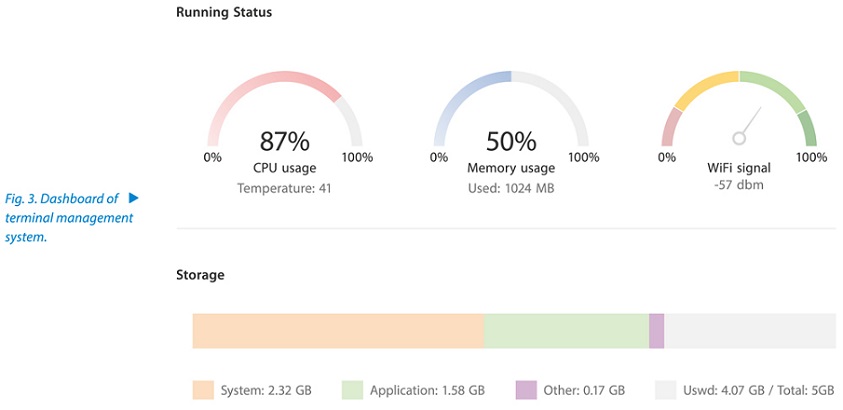Thriving Video Business Creates New Opportunities
In recent years, the rapid growth of global broadband services has fueled an increasing demand for video services. While focusing on expanding their user base, operators are also seeking to continually create more value from video services. On the one hand, consumer behavior is becoming increasingly personalized and fine-grained, resulting in a growing demand for TV advertising and gaming services. On the other hand, the growing number of set-top box (STB) models and vendors poses challenges for operators in managing the launch of new services. The network management (NM) functions of STBs have also become crucial requirements for many operators. This article will discuss the new opportunities in the development of the video business by introducing video advertising, gaming and the terminal management system (TMS).
Video Advertising
According to eMarketer, global spending on digital advertising surpassed $600 billion for the first time in 2022. This figure is expected to grow and exceed $800 billion by 2025. TV operators can benefit from TV advertising matched precisely with user preferences. In everyday video services, user viewing behavior and basic information are collected to create user profiles. With a focus on maintaining data security, precise advertisements are accurately delivered to users (Fig. 1). Using "digital prompts" in live broadcast signals, terminal devices seamlessly replace ads in the original video with personalized ads. These "addressable ads" can extend the time viewers spend on watching ads while minimizing the impact on user experience.

TV ads can bring more business revenue and enhanced experience:
- Improve the relevance of ads to viewers. Targeted TV ads can be tailored to the interests, behaviors and demographics of individual viewers, offering them a more attractive experience. With the relevance improved, users may be more interested in these ads and are willing to spend more time watching them.
- Provide better control over ads delivery. Targeted advertising can have a better control over the broadcast timing and duration of ads, creating a better advertising effect. It can choose to broadcast ads on specific programs, at a certain time of a day, or on specific channels.
- Improve ads inventory management for TV operators. With targeted TV ads, TV operators can optimize their ads inventory to provide viewers with more relevant ads. This enables increased viewer engagement rates and delivers a better viewing experience.
- Bring a higher return on investment (ROI). Compared with ordinary ads, targeted TV ads can effectively drive conversion and bring a higher ROI for advertisers. In addition, advertisers can save costs by avoiding wasting money on irrelevant ads.
- Create a larger share of revenue. With ads matched precisely with user preferences, viewers spend more time watching these ads, enabling TV operators to gain a larger share of revenue from advertising.
Gaming
The rapid growth of video services has also brought new innovations and opportunities for online games. Compared with conventional game consoles and computers, ordinary home video terminals or set-top boxes fall short in performance and operability when used for game playing. Usually, they cannot effectively support complex computing and gaming operations, and purchasing an extra handle or joystick is an additional expense.
To deal with these difficulties, game developers have designed some new models to improve user experience. Users can pair their smartphones with STBs or smart TVs via Bluetooth and Wi-Fi, and instantly convert the smartphones into remote controls (Fig. 2). The games are designed mainly for home users for entertainment and intelligence, using simple operations to deliver a single-player or multiplayer gaming experience.

This new gaming experience provides many opportunities for operators.
- Game incorporation as a service: Pay-TV operators can add games as a service to enable viewers to play games on TV. This can add value to subscription and attract more users.
- Cross-promotion with other services: Pay-TV operators can cross-promote gaming services with their other offerings such as on-demand videos or sports packages. This strategy can incentivize existing customers to explore gaming options and vice versa.
- Cooperation with game developers: Pay-TV operators can partner with game developers to offer exclusive access to new games or content, or even co-develop games tailored to their specific customer base.
- Enhancing interactivity: Pay-TV operators can use games to enhance interactivity within their programming. For example, they can develop games based on popular TV shows or movies, or provide interactive quizzes or polls at live events.
- Increasing revenue: Pay-TV operators can add games as a service to generate additional revenue. They can charge for access to certain games or offer microtransactions within the game, allowing players to buy additional content.
- Integration into existing STBs for cost reduction: Pay-TV operators can integrate games into their existing STBs, allowing customers to access games without the need to purchase additional hardware, which reduces the cost of customer experience.
- Competitive edge: Pay-TV operators offering gaming services can gain a competitive edge over those who do not. As more and more consumers play online games for entertainment, the ability to provide a comprehensive entertainment experience including gaming will present these operators with more opportunities.
TV operators can capitalize on these opportunities to improve their offerings, attract new customers, and increase revenue. They can also utilize gaming to create a more engaging and immersive user experience, establishing themselves as leaders in the evolving multimedia and entertainment market.
Terminal Management System
As TV operators' business continues to grow, the diversity of terminal devices and services presents management challenges. However, TMS can offer video service providers better analysis and help them learn their user viewing habits and preferred content. Through a user-friendly graphical interface, TMS presents the collected data to operators, enabling them to tailor their services to meet customer needs and deliver a better user experience (Fig. 3).

- More accurate positioning: The booming video streaming service increases the risks of security vulnerabilities and cyber attacks. TMS can strengthen the security of video streaming service by providing secure communication channels and monitoring network traffic to prevent any signs of intrusion. It can also predict potential faults or problems in video streaming service through data analysis, helping the after-sales service team proactively solve these problems before they grfow into major ones. In this way, it improves the overall customer experience while reducing downtime.
- More flexible deployment: TMS can be deployed in public or private cloud to provide greater scalability and flexibility. This means that video streaming service can be easily scaled or downsized to meet changing needs without having to invest heavily in hardware and long-term maintenance.
- More effective support: TMS can enable remote diagnosis and support for video services, and provide detailed customer feedback and analysis. While reducing the need for on-site after-sales service and hotline calls, it also helps to quickly identify and solve problems. In addition, TMS provides customers with self-service options such as resetting password, changing billing information, and managing preferences. While improving customer satisfaction, it reduces the workload of after-sales service personnel.
By introducing TMS, operators can improve equipment management efficiency, enhance user experience, support business growth and improve security, thereby increasing their competitiveness and profitability.
Conclusion
With the fast growth of their business, operators face the need for more fine-grained device and operational management. As user expectations for seamless experiences increase, there is a growing demand for greater service diversity and customer satisfaction. Leveraging the data generated from their operations to support existing and innovative business models will create tremendous opportunities for the development of operator video services.